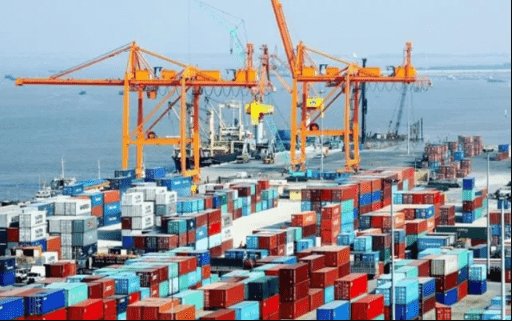Terminal operators will continue to face cost pressures as the industry handles the latest impacts of the COVID-19 pandemic, finds Drewry.
In its most recent Quarterly Port Sector Briefing, the independent maritime research consultancy presented its spotlight analysis that looked at the financial impact that COVID has had on the global container terminal sector.
Eleanor Hadland, senior analyst, Ports & Terminals, at Drewry, explained that the initial response of operators when faced with plummeting volumes, has been to “initiate a combination of both cost control and cash preservation measures”.
She added “Though cost cutting measure were somewhat constrained by the need to maintain full operations during the pandemic.”
Terminals have also faced increased costs during the pandemic including with new COVID-secure work practices and covering the costs of rising levels of absenteeism, she stressed.
“Cost pressures are expected to remain, in particular due to the increased volatility and demand that’s pushing operator costs up.”
Overall market activity
Container carriers have reported huge profits in 2020, but the container terminal sector is faring less well. Drewry’s sample group of 30 operators reported a 4% drop in volumes in the first half of the year. This compares against Drewry’s estimate of a 5.6% fall in global port handling over the same period, said Ms Hadland.
“Volume is the key driver of revenue for CT operations, so not surprisingly 80% of the companies sampled reported lower revenues in the first half of 2020. Combined revenues across the sample are down 2% compared to the first half of 2019.”
Tariffs bolster revenues
Overall revenues have not been as severely impacted as volumes due to annual tariff increases implemented in January 2020, but there is also an improvement in portfolio composition and traffic mix across the operators in Drewry’ sample for analysis. There’s also been some uplift in revenues generated by ancillary services including storage, which considering the first half of the year, when there was a slowdown in container movements due to delays on inland transport, is not surprising, said Ms Hadland.
Drewry used the results of its survey to estimate the impact of the crisis on the revenues of the global sector. “At the end of 2019, Drewry forecast the H1 2020 volumes would be 5% higher than in the first half of 2019, but this would have translated to global revenue growth of around 7% due to volume growth and annual tariff increases, stated Ms Hadland. “However, with the pandemic resulting in volumes dropping by almost 6%, the revised H1 is now 5% lower than in the first half of 2019 and that’s 11% lower than the pre-pandemic forecast.”
70% of the companies in the sample reported a lower EBITDA in the first half 2020 compared to the first half 2019. However, almost a third of operators reported increased EBITDA.
“Across the sample, the average EBITDA margin fell from 37.7% to 35.1%. For the sector as a whole, we forecast that global EBITDA in H1 2020 was around 16% lower than H1 2019 and that’s 21% below the pre-pandemic projection.”
Port throughput trends
When analysing port throughput trends, Drewry focuses on ports handling at least 125,000 TEU each quarter. This quarter there has been a further slowdown of global port throughput growth on an annualised basis, but there has been signs of volume recovery in the third quarter.
The analysis looks at the rolling average annual growth rate across the global sample ports (four quarter). Growth picked up pace from mid-2016, but had been slowing from as far back as the second quarter of 2018. It moved into negative territory at the end of Q2 2020. Global port throughput fell 2.6% in the four quarters to Q3 2020. This reflects the trajectory of the pandemic. “This is 30 basis points lower than the 2.3% decline reported in the 2nd quarter. The global volumes in the third quarter of 2020 are 1% higher in third quarter of 2019,” noted Ms Hadland.
Strong rebound
“The latest 2020 forecast for global container port throughput, issued at end of September, was for an overall decline of 3.3% in global port handling. This is a significant upgrade from earlier forecasts and reflects a strong rebound in handling in key markets in the second half of the year,” explained Ms Hadland.
Key challenges remain though. “Going into the fourth quarter with a high level of pent-up demand in the market, there are shortages of empty container in key export markets, in particular Asia, and rising levels of port congestion in the major import markets, Australia, the UK and North America.”
What’s next?
Drewry has looked at how businesses may look to reshape their businesses in respect of terminal operations, commercial and pricing strategy and capital investments in the wake of the crisis.
In terms of technology, the pandemic has acted as a catalyst for change, with accelerated uptake of digital processes.
Terminal operators are also expected to address their pricing model as carriers reap the benefits of stringent capacity management programmes. Ms Hadland said that Drewry anticipate a particular focus on defining the operational parameters within which the terminal services are provided. “They’re probably going to be looking to review their storage and other ancillary charges to ensure that the structure continues to encourage the most efficient use of the terminal.”
Deal activity remains low compared to 2019, as operators consolidate their position within the existing market rather than taking the riskier move of moving into new markets.
Source: Platts
